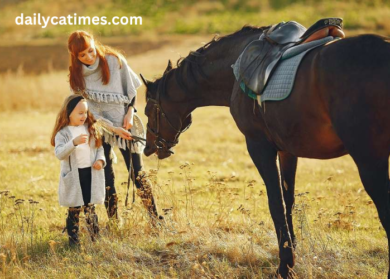Throughout human history, few animals have had as profound an impact on the development of civilizations as the horse. These magnificent creatures have been our companions, workers, and warriors, shaping the course of history through their strength, speed, and stamina. The story of horses is not just one of domestication but also of a deep, symbiotic relationship that has influenced human culture, society, and progress in countless ways. Explore a wide range of CasaCourses on our website. Enroll today and enhance your skills in various fields. Find the perfect course for you!
The Early Days of Domestication
The domestication of horses is believed to have begun around 4000 BCE on the steppes of Central Asia. The Botai culture, located in present-day Kazakhstan, is one of the earliest known societies to have tamed horses. Initially, horses were likely used for their meat and milk, but as humans recognized their potential for transportation and labor, a new chapter in human-animal relations began.
The ability to ride horses revolutionized human mobility. Early riders could cover vast distances, facilitating trade, communication, and cultural exchange. This newfound mobility also gave rise to the concept of cavalry, dramatically altering the nature of warfare.
Horses in Ancient Civilizations
As horses spread from Central Asia to other parts of the world, their role evolved. In ancient Mesopotamia, Egypt, and China, horses became symbols of power and prestige. Chariots, drawn by teams of horses, were used in battle and ceremonial processions, underscoring the animal’s significance.
In Mesopotamia, horses were depicted in art and mythology as divine creatures. The Egyptians, too, integrated horses into their society, using them for chariot racing and warfare. The Hyksos, a Semitic people who invaded Egypt around 1700 BCE, are credited with introducing horse-drawn chariots to the region, changing the dynamics of military conflicts.
The Classical Era and Beyond
The influence of horses continued to grow in the classical era. In ancient Greece, the horse was central to the mythos and reality of warfare and competition. The famed Macedonian cavalry, led by Alexander the Great, used the superior speed and maneuverability of horses to conquer vast territories. Greek mythology also celebrated horses through the stories of Pegasus, the winged horse, and the centaurs, half-human, half-horse beings.
In Rome, horses were indispensable to the empire’s military might. The Roman legions relied on cavalry units for reconnaissance, rapid assault, and communication. Horses also played a crucial role in Roman public entertainment, with chariot races at the Circus Maximus drawing massive crowds.
The Medieval Period and the Renaissance
The Middle Ages saw the horse become an even more integral part of European society. The knight, mounted on a powerful warhorse, became a symbol of feudal power and chivalry. The breeding of horses for specific purposes—such as the heavy destriers for combat and lighter palfreys for travel—reflected the growing sophistication in equine management.
The Renaissance era brought about a renewed interest in classical knowledge, including advancements in horse training and breeding. The Spanish Riding School in Vienna, established in the 16th century, is a testament to the period’s dedication to equestrian excellence.
Horses in the Modern World
The industrial revolution and the advent of mechanized transport diminished the horse’s role in many areas, but these animals remained crucial in specific contexts. In agriculture, horses continued to be vital for plowing fields and transporting goods. The iconic image of the cowboy in the American West, herding cattle across vast plains, underscores the horse’s enduring importance in certain industries.
The 20th century saw horses transition from work animals to recreational and sporting partners. Equestrian sports such as show jumping, dressage, and horse racing became popular, celebrating the skill and grace of both horse and rider. Today, horses are also used in therapeutic settings, helping individuals with physical, emotional, and cognitive challenges through equine-assisted therapy.
The Symbolic and Cultural Legacy
Beyond their practical uses, horses have left an indelible mark on human culture. They appear in art, literature, and mythology across the globe. From the cave paintings of Lascaux to the equestrian statues adorning cities, the horse remains a potent symbol of strength, freedom, and beauty.
The relationship between humans and horses is a testament to mutual respect and adaptation. Horses have not only helped shape human history but have also been shaped by it, evolving alongside us over millennia.
Conclusion
The journey from hoofbeats to harmony encapsulates the profound and multifaceted relationship between humans and horses. These animals have been our allies in war, our partners in labor, and our companions in sport and leisure. As we move forward, the legacy of the horse continues to remind us of the deep bonds we share with the animal kingdom and the ways in which these connections have forged our shared history.

